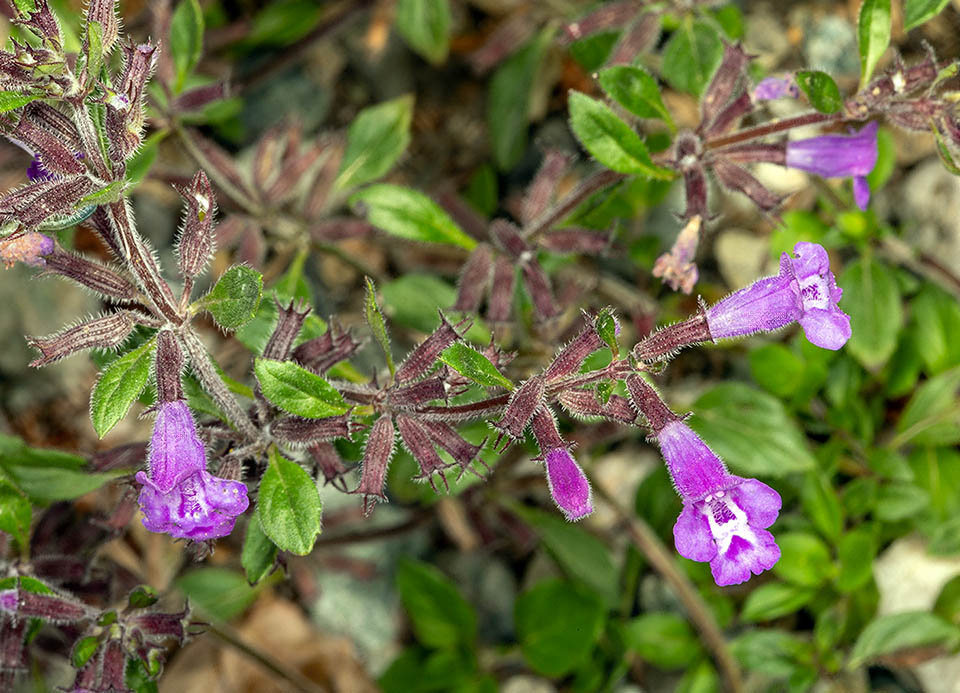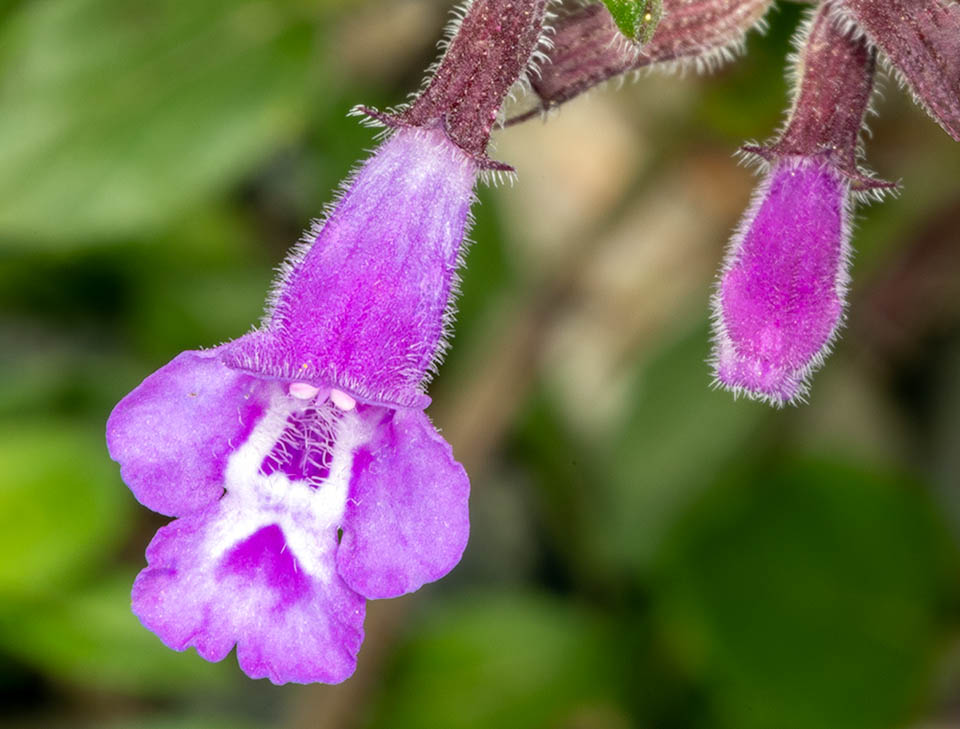Family : Lamiaceae

Text © Prof. Pietro Medagli

English translation by Mario Beltramini
Ziziphora granatensis (Boiss. & Reut.) Melnikov subsp. alpina (L.) Bräuchler & Gutermann, known as Alpine berry or Clinopodium alpinum, is a southern European orophyte, that is a species typical of the mountain areas of southern Europe from the Iberian Peninsula, Alps, Apennines and Balkans, where is found in the herbaceous meadows and on calcareous stony soils. It lives averagely between 1000 and 2600 m, but also reaches much lower altitudes, up to 250 m.
For what etymology is concerned, the first scientific binomial has been assigned by Linnaeus in 1753 with the name of Thymus alpinus, later on modified by various Authors to the current binomial by Bräuchler & Gutermann in 2019.
The meaning of the genus Ziziphora comes from the Greek “ζιζυφον” (zizyphon), jujube and from “φορέω” (phoréo), to carry, whilst the specific name granatensis comes from the fact the first finding appears having occurred in the area of Granada in Andalusia (Spain).
Plant averagely tall between 40-50 cm, with a minimum height of 5 cm. The biological form is of a suffruticose Chamaephytes (Ch suffr), that is a perennial plant woody at the base, with overwintering buds located between 2 and 30 cm above the ground; the herbaceous part dries up annually and only the woody portions keep alive.

Ziziphora granatensis subsp. alpina is a southern European orophyte usually growing between 1000 and 2600 m of altitude © Giuseppe Mazza
The plant is covered with down formed by simple or ramified hairs. The root system consists of several very developed secondary roots that branch out from a thin taproot.
The stem has a more or less procumbent and creeping shape that presents a transversal section with a tetragonal angular appearance, with sharp edges, having four concave pubescent faces (covered with down on alternate faces).
The leaves are arranged opposite to the stem; briefly petiolate, with a 1,3 mm long petiole and having no stipules. The shape may be from ovoid to elliptical, 2 to 10 mm broad and 5 to 15 mm long, with the margin of the foliar lamina serrated with more or less sharp teeth and at times folded backwards (revolute). On the lower pagina are visible evident veins.
The inflorescence is formed by a whole of several flowers developing at the same time on the top of the stem, with 3 to 8 flowers. These are usually larger than the axillary leaves. They are hermaphroditic flowers. The calyx is gamosepalous, of an almost bilabiate appearance, with outer surface densely downed, with 06-08 mm straight hairs. The calyceal tube is tubular-bell-shaped, 4-6 mm long, swollen at the base, then constricted. Of the two lips, the upper has 1-2 mm long teeth, the lower is 1,5-3 mm long. The surface of the calyx is crossed by about 13 longitudinal veins.

The inflorescence bears 3-8 flowers developing at same time on the top of the stem. Medicinal virtues © Giuseppe Mazza
The corolla is zygomorphic, with bilateral symmetry, 15-20 mm long, with 10-13 mm tube, of conical shape and slightly swollen and internally pubescent. On the apex are present two labia, the upper bilobate and the lower markedly trilobate, of violet colour. Inside the corolla are present 4 didynamous stamens, that are arranged in two couples, with glabrous filaments, of which the fore pair is longer, protruding from the upper lip of the corolla.
The ovary is superior, formed by two carpels having four ovules. The filiform style is inserted at the base of the ovary, with bilobate stigma. Flowering occurs in the period going from May to September depending on the altitudes. The pollination is done by the insects, bees in particular. The dissemination is entrusted to the winds and to the ants.
According to popular medicine this plant has the following medicinal properties: diaphoretic (facilitates skin perspiration); febrifuge (lowers body temperature). From a nutritional point of view, the leaves are used like tea.
Synonyms: Acinos alpinus (L.) Mpench. subsp. alpinus ; Thymus alpinus L., Sp. Pl.: 591 (1753).
→ To appreciate the biodiversity within the family LAMIACEAE please click here.
